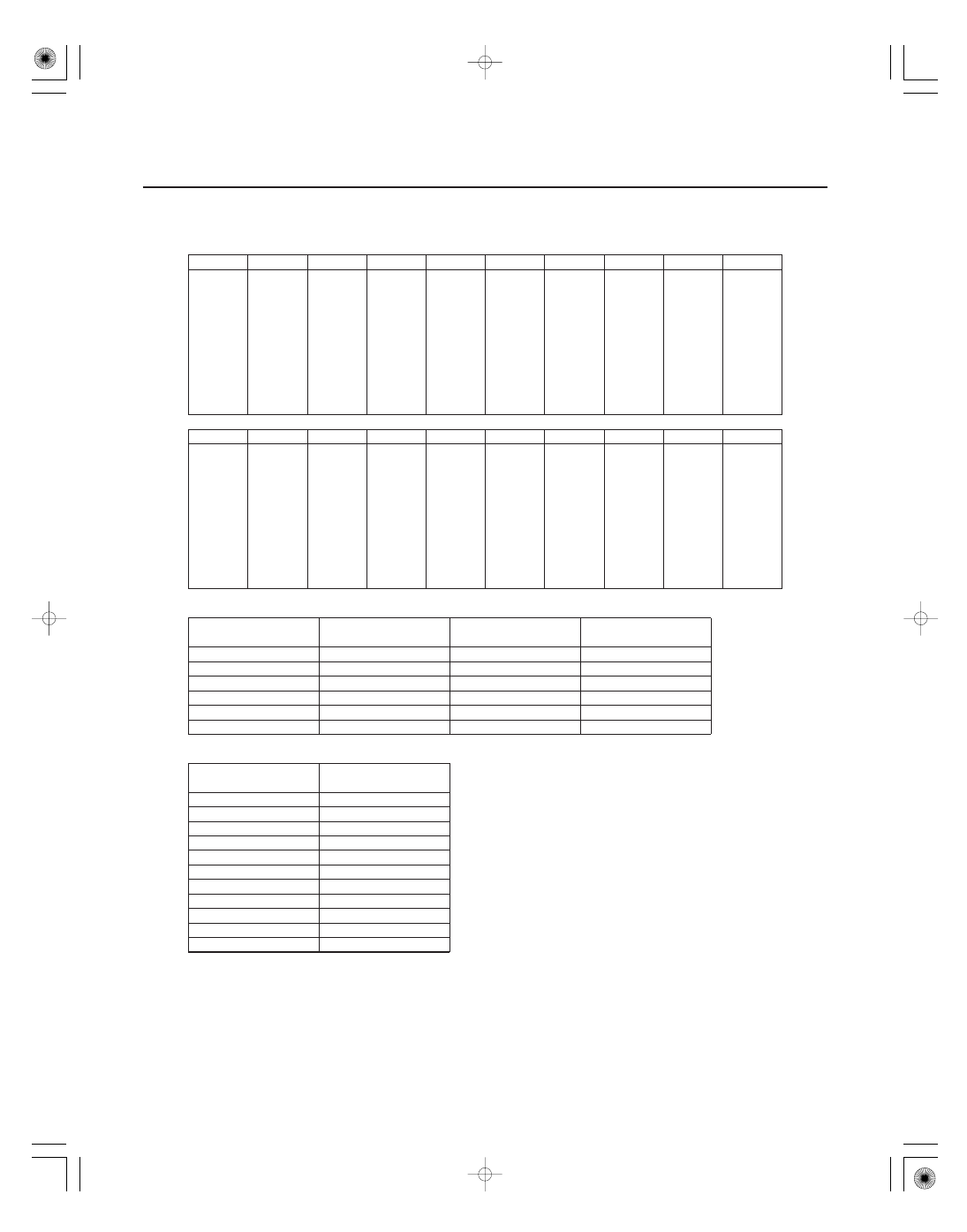Acura CSX. Manual - part 474

−
−
−
−
−
−
−
−
−
−
−
−
−
−
−
−
−
−
−
−
−
−
−
−
−
−
−
―――
―――
+
+
Celsius to Fahrenheit Conversion Table
Alphanumeric Conversion Table
Alphanumeric Conversion Table (Mode Positioning)
21-14
Climate Control
°C
°F
°C
°F
°C
°F
°C
°F
°C
°F
0
32
10
50
20
68
30
86
40
104
1
34
11
52
21
70
31
88
41
106
2
36
12
54
22
72
32
90
42
108
3
37
13
55
23
73
33
91
43
109
4
39
14
57
24
75
34
93
44
111
5
41
15
59
25
77
35
95
45
113
6
43
16
61
26
79
36
97
46
115
7
45
17
63
27
81
37
99
47
117
8
46
18
64
28
82
38
100
48
118
9
48
19
66
29
84
39
102
49
120
°C
°F
°C
°F
°C
°F
°C
°F
°C
°F
50
122
60
140
70
158
80
176
90
194
51
124
61
142
71
160
81
178
91
196
52
126
62
144
72
162
82
180
92
198
53
127
63
145
73
163
83
181
93
199
54
128
64
147
74
165
84
183
94
201
55
131
65
149
75
167
85
185
95
203
56
133
66
151
76
169
86
187
96
205
57
135
67
152
77
170
87
188
97
207
58
136
68
154
78
172
88
190
98
208
59
139
69
158
79
174
89
192
99
210
Display Reading
(Alphanumeric)
°C
°F
%
A1 thru A9
1 thru
9
30 thru 16
1 thru
9
B0 thru B9
10 thru
19
14 thru
2
10 thru
19
C0 thru C9
20 thru
29
4 thru
20
20 thru
29
D0 thru D9
30 thru
39
22 thru
38
30 thru
39
E0 thru E9
40 thru
49
40 thru
58
40 thru
49
F0 thru F9
100 thru
109
Display Reading
(Alphanumeric)
Mode Position
2
OVER VENT
A
VENT
8
VENT-HEAT/VENT
c
HEAT/VENT
d
HEAT/VENT-HEAT
9
HEAT
b
HEAT-HEAT/DEF
3
HEAT/DEF
7
HEAT/DEF-DEF
6
DEF
E
OVER DEF
08/08/21 14:40:58 61SNR030_210_0015